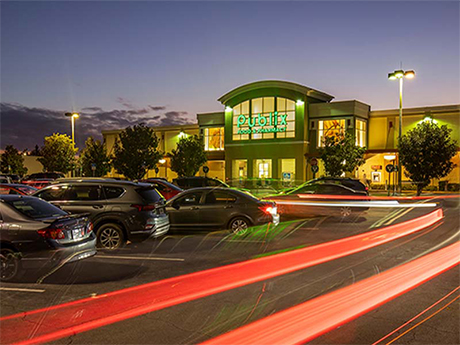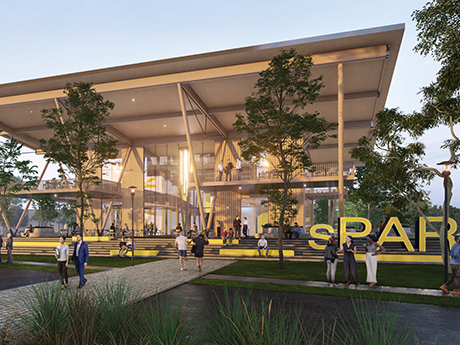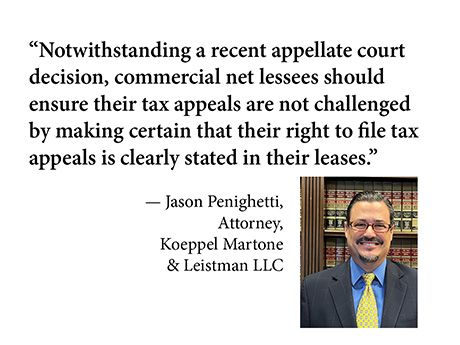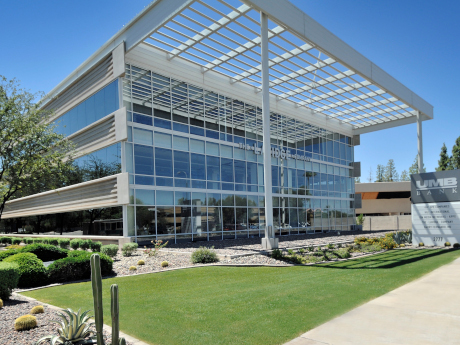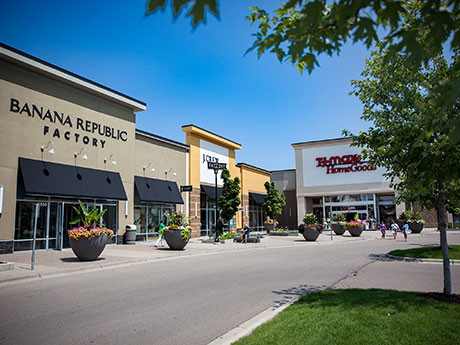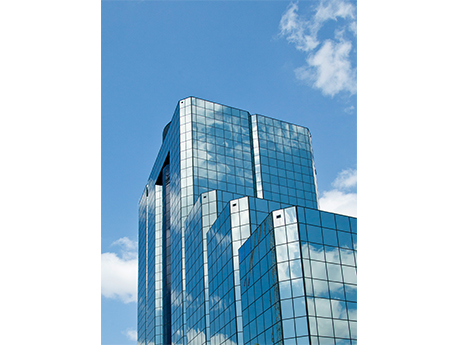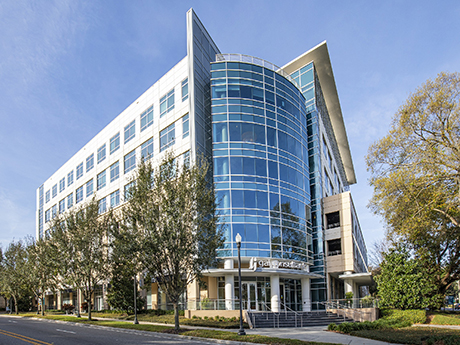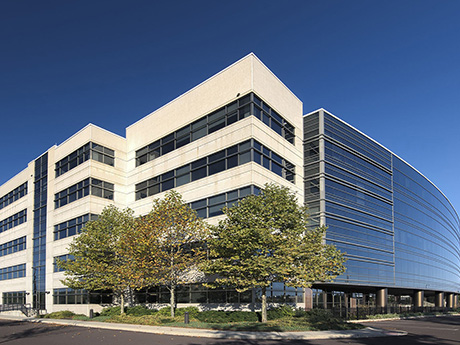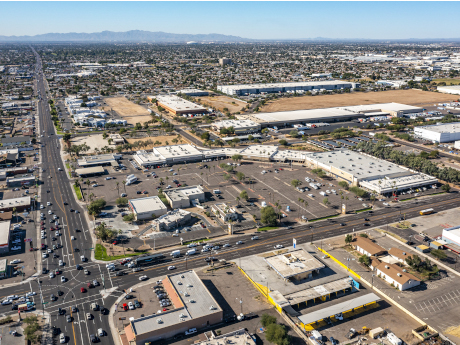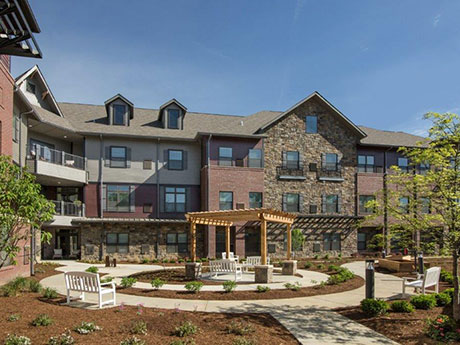The retail market in the Orlando MSA is doing well, on the surface. According to the numbers, the region has recovered from the effects of the COVID-19 pandemic. Orlando’s economy is heavily driven by tourism and when travel stopped and the initial state-wide shutdown orders went into effect on April 3, 2020, the impacts were profound and widespread, since four of the top 10 employers in Central Florida are in hospitality or retail, as well as Orlando International Airport. Since then, life in Central Florida has largely returned to normal. Tourism is back, hotel occupancy is up and people are dining out again. Retail numbers for the second quarter are actually better than in the first quarter of 2019, according to CoStar Group. The availability percentage at the beginning of 2019 was 5.9 percent, compared to 4.7 percent at the end of the second quarter. The average rent is up as well, rising from $21.94 per square foot to $25.52. Consumer habits have changed as e-commerce is still enormously popular, although it’s now more about convenience than mitigating risks. For those who can, working from home has become the preferred mode. As a consequence of the remote work trend, local …
Market Reports
While the Research Triangle Park (RTP) is the heartbeat of all things life sciences in the Southeast, the outlying areas of the Raleigh-Durham market, commonly referred to as the Triangle, haven’t been ignored by expansive growth in the sector. Corporate announcements and expansions in Holly Springs, Sanford, Four Oaks and Hillsborough have been more prevalent in recent years, as well as in the home base of Raleigh. Amgen, a California based company, is constructing a $550 million biomanufacturing facility in Holly Springs, and Becton Dickinson recently selected Four Oaks in Johnston County for its new manufacturing site, with plans to invest approximately $25 million in the development. After many years of focusing on the manufacturing industry, Lee County, approximately 40 miles from Raleigh, is becoming a burgeoning hub for life sciences after the expansions of Pfizer’s 230-acre site. A subsidiary of Abzena chose Sanford following a nationwide search for its 325-job manufacturing facility. Also in Sanford, Astellas Gene Therapies delivered a $109 million facility in the second quarter, its first outside California. It is evident that investors and developers see great opportunity in both the heart of the Triangle’s urban cores and rapidly growing outlying counties. Developers are responding to …
By Jason Penighetti, attorney, Koeppel Martone & Leistman LLC In a far-reaching decision, New York’s highest court has affirmed the rights of tenants under a commercial net lease to protest assessments and reduce their real property tax burden. The ruling reversed a State Supreme Court dismissal of a petition on the grounds that only a property’s owner can file an administrative grievance with the Board of Assessment Review. In a net lease, the tenant is responsible for paying real estate taxes and other expenses stated in the lease. In the matter of DCH Auto vs. Town of Mamaroneck, the Court of Appeals in June 2022 published a unanimous decision stating that tenants contractually obligated to pay real estate taxes and authorized to protest assessments may file tax appeals even when they do not hold title to the underlying real estate. Restoring a Precedent DCH Auto operated a car dealership in a net leased property in Mamaroneck, New York. Its lease with the owner required DCH to pay the property’s real estate taxes in addition to rent. Commercial tenants with this type of lease commonly file tax appeals to correct excessive tax bills and mitigate operating costs. These occupiers include retailers …
By Phil Breidenbach, Senior Executive Vice President, Colliers Class A landlords are answering the call from tenants for captivating workplaces. These re-imagined environments are drawing businesses to buildings and invigorating absorption in the market. Greater Phoenix office vacancy fell to 13.5 percent at mid-year, which was a 0.6 percent drop from last quarter and 0.7 percent lower than mid-year 2021. This number also sits 1.6 percent below the national average. While 287,000 square feet of new product was delivered, more than 587,000 square feet was absorbed. This is evidence the workforce is finding its way back to the office, if not full-time at least a few days a week. The refreshing surge in absorption is driven by companies coming to the best and newest buildings — redefining Class A with amenities that compel the workforce back into the office. New buildings like 100 Mill and Cavasson are two great examples. The first, 100 Mill, was completed in the second quarter and is more than 90 percent preleased. The building will feature next-level common areas and best-in-class meeting and lounge areas. The flight to quality trend has evolved into a flight to experience trend. Companies are finally coming to grips with the reality that how they …
By Jesseka Doherty and Johnny Reimann, Mid-America Real Estate The fundamental strength of the metro Minneapolis economy is on full display in the suburban retail real estate market this summer, where space is tight, new supply is limited, rents are on the rise and construction costs continue to challenge tenants and landlords alike. The macroeconomic picture in the first half of the year was stunning, actually. For the second quarter that ended June 30, the unemployment rate was a remarkable sub-2 percent, which was even lower than the national level of about 4 percent, and consumer spending was robust. Urban submarkets have been more challenged, but even in the Minneapolis central business district, retail rents are holding up as the office market shows stability. Driving demand With work-from-home still a factor, remote employees who live in the suburbs often are more inclined to shop, dine and play close to home, which bodes well for retail in proximity. Across key trade areas, retailers and other tenants in regional and community centers are more in demand than ever. Submarkets faring well include Apple Valley, Burnsville, Coon Rapids, Eagan, Maple Grove, Roseville and Woodbury. The densification of the suburbs also is driving demand …
By Brett Merz, senior vice president, KBS Texas continues to be a top state for job and population growth as its low cost of living and business-friendly policies attract companies and residents from other parts of the country. As such, many commercial real estate owners and operators are recognizing the state’s potential for increased leasing activity in the second half of 2022 and throughout 2023. The portfolio of KBS, which has long been investing in these markets, currently contains 16 office assets in these cities, and we continue to evaluate opportunities to acquire more that align with our investment strategy. Based on 30 years of experience in acquiring and operating premier office assets throughout Texas and beyond, here are a few trends we anticipate continuing for the remainder of 2022 and into next year. Rising In-Migration Major Texas markets including Austin, Dallas-Fort Worth (DFW), Houston and San Antonio are likely to remain magnets for in-migration. Residents are moving to these markets in search of a more affordable quality of life, which is aided by the absence of a state income tax. In addition, companies are seeking office space in a region with business-friendly tax policies. Austin, in particular, continues to …
The Orlando office market is finally seeing positive absorption across all major submarkets. An impressive second quarter recorded 122,423 square feet of positive absorption, bringing the total for the first half of the year to 156,778 square feet. As companies have been making decisions on their return to the office, the Orlando market has seen increased activity with numerous large, long-term leases signed, predominantly fueled by smaller local users and corporate relocations from other markets. Kimley-Horn’s relocation and expansion to 60,000 square feet in downtown Orlando marked one of the largest transactions in the past five years. While still up 20 basis points year-over-year, total vacancy saw its first drop in the last four quarters. Vacancy was consistently holding at 13.3 percent from third-quarter 2021 until it fell 30 basis points this quarter to 13 percent. The major driver of the drop was vacant sublease space being withdrawn or leased. Although firms are still seeking sublease route for their office space, we believe more space will be given back in the near term. We are seeing an increased pattern of flight to quality, where corporate users are focusing their attention on submarkets and assets that provide higher quality workplaces and …
By Marc DeLuca, CEO and eastern regional president, KBS Refreshing office properties with updated amenities is a time-tested strategy for infusing buildings with new life and appealing to future and existing tenants. While an asset’s location is a fixed element and a region’s fundamentals tend to change slowly, amenities are more flexible and can usually be implemented quickly if necessary for immediate impact. A recent report by flexible workspace provider TCC Canada found that many companies and their team members increasingly recognize the benefits of gathering teams in a central workplace. But after more than two years of varying degrees of remote work, it makes sense for property owners to invest in amenities that actually meet the needs and wants of office users — which have recently shifted. So which amenities are the best ones to include in today’s office buildings? As an owner and operator of premier office assets for the last 30 years, KBS has witnessed amenity preferences come and go. We know how to spot a passing fad versus a trend with legs. Based on our expertise in this area, here are a few amenities we see attracting office tenants in the current and emerging environment. Scalable …
By Dave Cheatham, President, Velocity Retail Group For decades, Arizona’s housing and commercial real estate industry have benefitted and fed the state’s robust gains as population grew. Even during the pandemic, Phoenix welcomed more than 140,000 new residents fleeing more expensive, crowded coastal cities for what many deemed an improved quality of life. As we know, retail follows housing. Phoenix’s housing market has restarted, and these new markets will need retail to serve them. It has taken 15 years for retail vacancy rates to return to pre-recession levels in Phoenix. In the second quarter of 2022, the direct vacancy rate for retail properties declined to 6.7 percent. West Phoenix, Northwest Phoenix and Scottsdale are currently the strongest submarkets, drawing residents to fast growing cities and towns. I see retail expanding as residential development at the edges of the city continue, and agricultural land is transformed into subdivisions. With inflation shrinking household budgets, consumers are making intentional choices on where they drive and what they buy. Those retailers who are large-space occupiers will continue to focus on delivering value and lower prices to their customers. Shopping center development has been anemic in Phoenix in the past decade, as those that lease big …
By Dan Thies, Sansone Group We are more than halfway through the year and the multifamily market in the St. Louis metropolitan area continues to grow. As of the first quarter, there were 5,112 multifamily units under construction in the metropolitan area. So far, the rise in interest rates and the increase in construction costs has not dampened the enthusiasm of investors and developers for constructing new units in this market. Vacancy rates continue to stay low and lease rates continue to increase. As long as these market conditions continue, developers are going to bring new units to market. The new units being built will reflect new design features, which many developers are implementing in their communities. One of the many design trends taking place across the country and in the St. Louis area addresses the rise in the older population becoming renters. Many members of the baby boomer generation are looking to sell their suburban homes to downsize into smaller, more practical spaces. Their children have moved out of the home, and they no longer need all the space or maintenance of a home. They want to pull the equity out of their home and place it in a …


